When you see a yellow exclamation mark on Device Manager next to the device Teredo Tunneling Pseudo-Interface and the status of this device is “The device cannot start (Code 10).“, your system doesn’t recognize the driver properly.
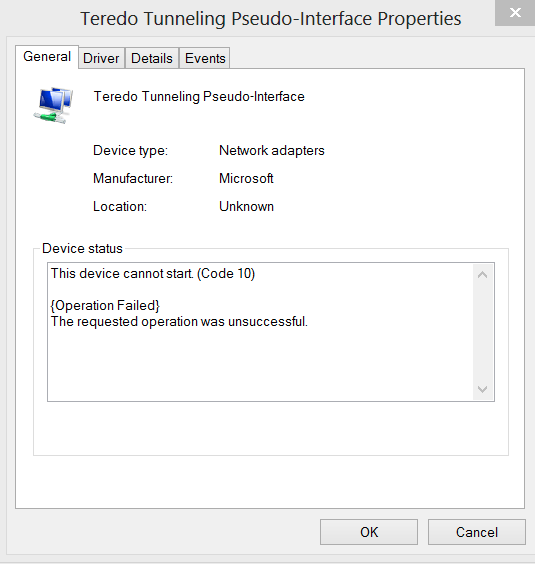
Feel no pressure, this is not a hard problem to solve. This article gives you 3 solutions to try.
What is Teredo?
How do I fix it?
Here are 3 fixes for you to try. You may not need to try them all, just work your way down and find the one works for you.
Note: The images are shown in Windows 7, but all the fixes also apply to Windows 10.
- Uninstall all Teredo Tunneling Adapters & Interfaces
- Solved with Driver Easy (Recommended)
- From Command Prompt
Method 1: Uninstall all Teredo Tunneling Adapters & Interfaces
1) On your keyboard, press the Windows logo key and R at the same time. Type devmgmt.msc and press Enter.

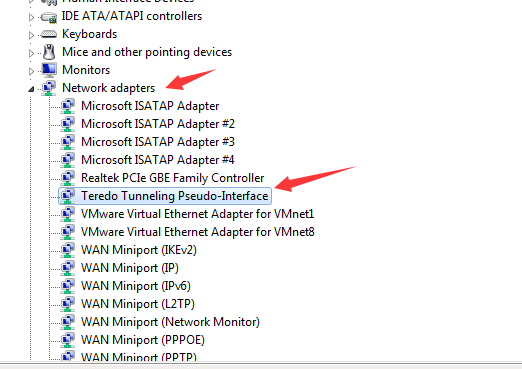
2) Locate Teredo Tunneling Pseudo-Interface under category Network adapters.
3) Right-click Teredo Tunneling Pseudo-Interface and click Uninstall.
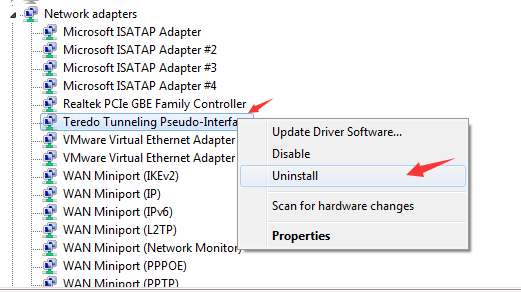
4) If you see options such as Microsoft Teredo Tunneling Adapters( for example, Microsoft Teredo Tunneling Adapter #2 or #3 or #4, etc. ), uninstall them as well.
5) Click Action at the top and Add legacy hardware.
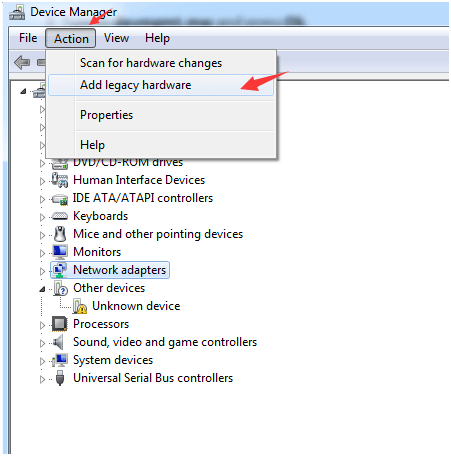
6) Click Next and Next until you see this panel:
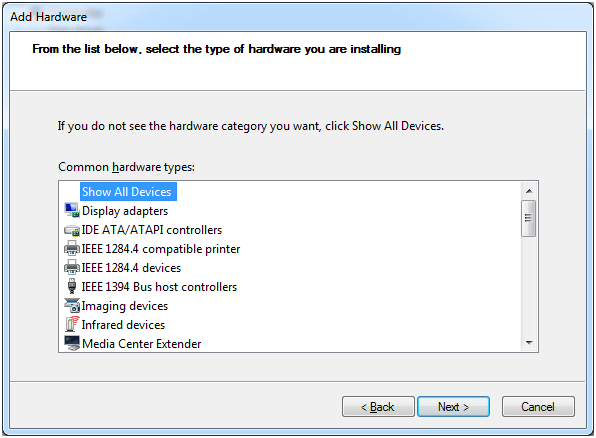
7) Click Network Adapter and Next.

8) Click Microsoft option on the left panel and Microsoft Teredo Tunneling Adapter on the right panel. Then click Next.
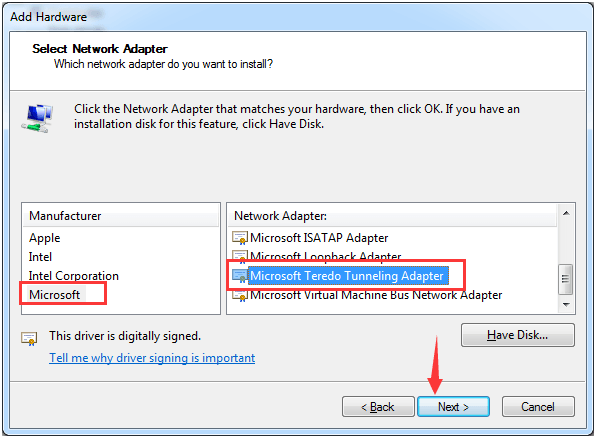
Method 2: Solved with Driver Easy (Recommended)
Code 10 problem in Device Manager can usually be fixed by updating device drivers.
You can search on the internet for the correct Teredo Tunneling Pseudo-Interface driver and then install it by yourself.
If you don’t have the time, patience or computer skills to update your drivers manually, you can do it automatically with Driver Easy.
Driver Easy will automatically recognize your system and find the correct drivers for it. You don’t need to know exactly what system your computer is running, you don’t need to risk downloading and installing the wrong driver, and you don’t need to worry about making a mistake when installing.
You can update your drivers automatically with either the FREE or the Pro version of Driver Easy. But with the Pro version it takes just 2 clicks (and you get full support and a 30-day money back guarantee):
1) Download and install Driver Easy.
2) Run Driver Easy and click the Scan Now button. Driver Easy will then scan your computer and detect any problem drivers.
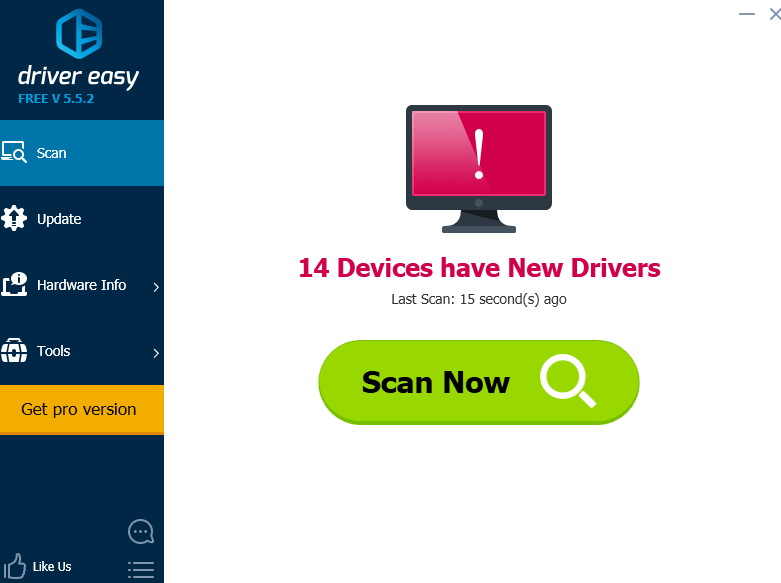
3) Click the Update button next to a flagged driver to automatically download and install the correct version of this driver (you can do this with the FREE version).
Or click Update All to automatically download and install the correct version of all the drivers that are missing or out of date on your system (this requires the Pro version – you’ll be prompted to upgrade when you click Update All).
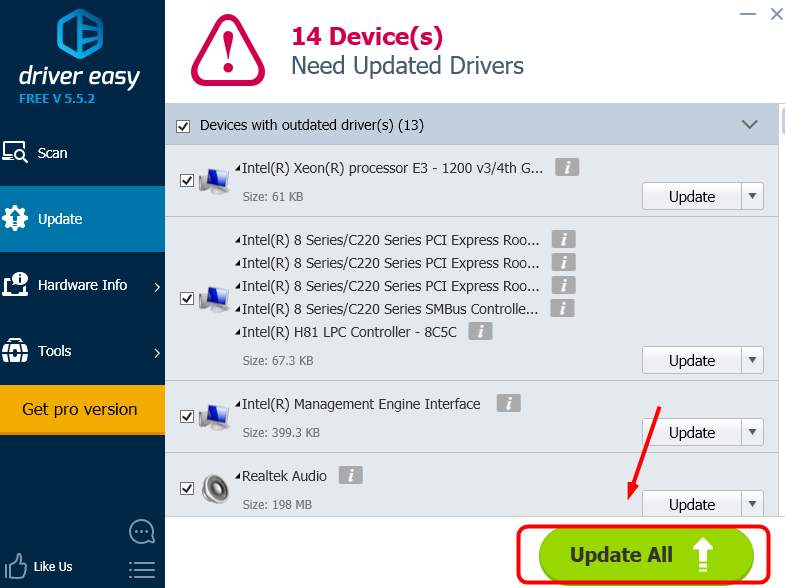
Method 3: From Command Prompt
Refreshing your Teredo service also helps to solve your problem:
1) Type CMD in the start panel searching box. Right-click CMD and click Run as Administrator.
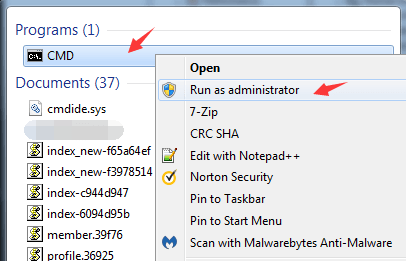
2) Type in the following command and press Enter after each of them.
netsh
int teredo
set state disabled
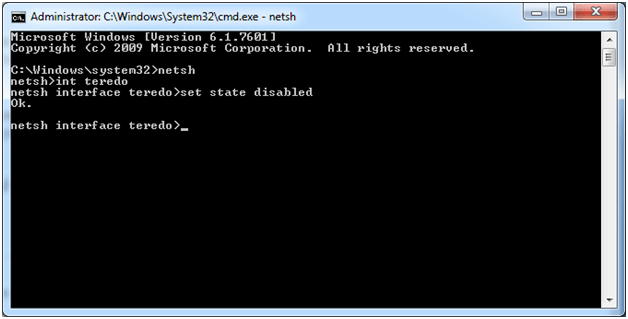
3) Go to Device Manager again.
4) Expand Network adapter. Right-click Teredo Tunneling Pseudo-Interface and click Uninstall.
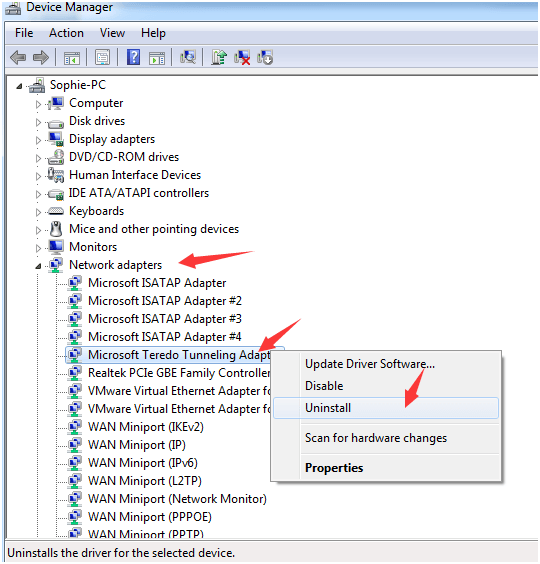
5) Open Command Prompt with administrator credentials again.

6) Type in the following commands and press Enter after each command.
netsh
int ipv6
set teredo client

7) Open Device Manager and click Scan for new hardware changes on the top.

8) You will see the device is problem free now.





